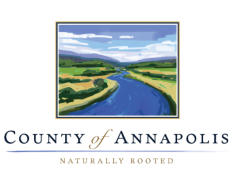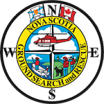
Hug A Tree & Survive
Hug-a-Tree and Survive is an AdventureSmart program that helps lost children survive in the woods. It
teaches children how not to become lost in the woods, and what to do should they become lost.
Hug-A-Tree and Survive is a great program to bring into your family, classroom, guide or scout unit, youth group, or any other community group interested in teaching kids about being safe. If a child should become lost in the woods, hugging a tree can help them stay safe, and be found. Staying near a tree offers some protection from the elements, and keeps lost children in the same place, which makes it easier for searchers to find them.The Hug-A-Tree Rules
Hug-A-Tree and Survive emphasizes four key rules to keeping children safe:
1.
Tell an adult where you are going.
a.
Always tell your parents, or another trusted adult where you are going, who you are going with, and when you will be
back. You can do this in person, over the phone, through a text message, or by leaving a note in a place they will see
it.
2.
If you are lost, “Hug-A-Tree” and stay put.
a.
A tree can help protect you from the elements while you’re outdoors, and most importantly, keep you in one place.
Depending on where you are, there may not always be a tree. Perhaps your “tree” can be a large rock or bench at a
park, or a sales counter at a mall. No matter what your landmark is, it is
important to stay put, in order to stay safe.
3.
Keep warm and dry.
a.
Temperatures change throughout the day, and can drop at night. Even if
you are warm during the day, keep your jacket handy for night time. If
you get cold, put on an extra layer, pull up your hood or put on your hat
if you have one, tuck your shirt in, tuck pant legs into your socks, and
zip up your jacket. You can also keep warm by building a nest to keep
you off the ground, or by using an emergency shelter.
Help searchers find you by answering their calls.
Whether searchers are parents, police officers, or SAR volunteers, remember they
just want to get you home safely. Answer back to their calls by making noise and signaling, so you can be heard and seen. Make
sure to leave lots of footprints and clues, so searchers can follow your tracks to find you.
While designed for the outdoors, these rules are easily transferable to other places including sporting events, shopping malls,
public parks, urban areas, and much more! Together, these core points work to ensure kids have the knowledge and training
needed to safely enjoy the outdoors, and their communities.
The Hug-a-Tree and Survive Presentation
The Hug-a-Tree and Survive presentation is aimed at children aged 5–11, and can be delivered by any interested
adult—including parents, teachers, and guide or scout leaders—using the Presenting Hug-A-Tree guide. Alternatively, when
available, trained AdventureSmart presenters are able to present the program to groups. Visit our Request a Presentation page
to submit your request.
Hug-A-Tree and Survive was developed in the United States following the search for Jimmy Beveridge in 1981, and was first
adapted for Canadian use by the RCMP. It was updated by the National Search and Rescue Secretariat (NSS) and the SAR
Volunteer Association of Canada (SARVAC) in 2015 with new videos and activities to support program delivery.
Important to note: AdventureSmart is a prevention program that makes key safety information available to the public and to
trained presenters. Organizations that request presentations or
choose to deliver this information themselves are responsible for
the safety of their audiences, and AdventureSmart accepts no
liability. Policies and screening procedures that ensure children are
protected should always be followed, including ensuring a
responsible person from your organization stays with the group
throughout the presentation.
The Hug-a-Tree and Survive Video
This 12 minute video features John who is so excited to explore
that he loses his way. Once he realizes he is lost, John is well-
prepared, and uses his head to stay safe and be found! This age-
appropriate video is a great way to show kids how not to become
lost, and what to do if you are.

Hug- A-Tree Program
If a child should become lost in the
woods, hugging a tree can help them
stay safe, and be found. Staying near
a tree offers some protection from
the elements, and keeps lost children
in the same place, which makes it
easier for searchers to find them.
FOLLOW US
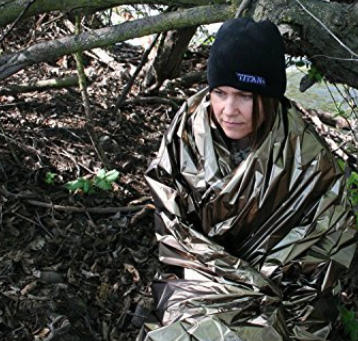
CONTACT US
Annapolis County Ground Search and Rescue, P.O. Box 234, Bridgetown N.S. B0S 1C0 info@acgsar.ca
We gratefully acknowledge our supporters.
Without them…. We would be lost!



Hug A Tree & Survive
Hug-a-Tree and Survive is an AdventureSmart program that helps lost children survive in
the woods. It teaches children how not to become lost in the woods, and what to do
should they become lost.
Hug-A-Tree and Survive is a great program to bring into your family, classroom, guide or scout unit, youth group, or any other community group interested in teaching kids about being safe. If a child should become lost in the woods, hugging a tree can help them stay safe, and be found. Staying near a tree offers some protection from the elements, and keeps lost children in the same place, which makes it easier for searchers to find them.The Hug-A-Tree Rules
Hug-A-Tree and Survive emphasizes four key rules to keeping children safe:
1.
Tell an adult where you are going.
a.
Always tell your parents, or another trusted adult where you are going, who you are going with,
and when you will be back. You can do this in person, over the phone, through a text message, or
by leaving a note in a place they will see it.
2.
If you are lost, “Hug-A-Tree” and stay put.
a.
A tree can help protect you from the elements while you’re outdoors, and most importantly, keep
you in one place. Depending on where you are, there may not always be a tree. Perhaps your “tree”
can be a large rock or bench at a park, or a sales counter at a mall. No matter what your landmark
is, it is important to stay put, in order to stay safe.
3.
Keep warm and dry.
a.
Temperatures change throughout the day, and can drop at night. Even if you are warm during the
day, keep your jacket handy for night time. If you get cold, put on an extra layer, pull up your hood
or put on your hat if you have one, tuck your shirt in, tuck pant legs into your socks, and zip up
your jacket. You can also keep warm by building a
nest to keep you off the ground, or by using an
emergency shelter.
Help searchers find you by answering their calls.
Whether searchers are parents, police officers, or SAR
volunteers, remember they just want to get you home safely.
Answer back to their calls by making noise and signaling, so
you can be heard and seen. Make sure to leave lots of
footprints and clues, so searchers can follow your tracks to
find you.
While designed for the outdoors, these rules are easily transferable to other places including sporting events,
shopping malls, public parks, urban areas, and much more! Together, these core points work to ensure kids
have the knowledge and training needed to safely enjoy the outdoors, and their communities.
The Hug-a-Tree and Survive Presentation
The Hug-a-Tree and Survive presentation is aimed at children aged 5–11, and can be delivered by any
interested adult—including parents, teachers, and guide or scout leaders—using the Presenting Hug-A-Tree
guide. Alternatively, when available, trained AdventureSmart presenters are able to present the program to
groups. Visit our Request a Presentation page to submit your request.
Hug-A-Tree and Survive was developed in the United States following the search for Jimmy Beveridge in
1981, and was first adapted for Canadian use by the RCMP. It was updated by the National Search and
Rescue Secretariat (NSS) and the SAR Volunteer Association of Canada (SARVAC) in 2015 with new videos and
activities to support program delivery.
Important to note: AdventureSmart is a prevention program that makes key safety information available to
the public and to trained presenters. Organizations that request presentations or choose to deliver this
information themselves are responsible for the safety of their audiences, and AdventureSmart accepts no
liability. Policies and screening procedures that ensure children are protected should always be followed,
including ensuring a responsible person from your organization stays with the group throughout the
presentation.
The Hug-a-Tree and Survive Video
This 12 minute video features John who is so
excited to explore that he loses his way. Once he
realizes he is lost, John is well-prepared, and uses
his head to stay safe and be found! This age-
appropriate video is a great way to show kids how
not to become lost, and what to do if you are.
Hug- A-Tree
Program
If a child should become lost
in the woods, hugging a tree
can help them stay safe, and
be found. Staying near a tree
offers some protection from
the elements, and keeps lost
children in the same place,
which makes it easier for
searchers to find them.
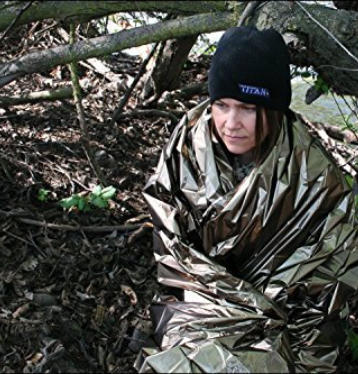
CONTACT US
Annapolis County Ground Search and Rescue, P.O. Box 234, Bridgetown N.S. B0S 1C0 info@ACGSAR.ca
We gratefully acknowledge our supporters.
Without them…. We would be lost!

Annapolis County Ground Search and Rescue Service Area
FOLLOW US



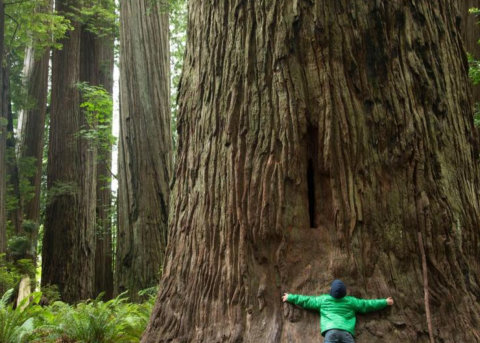
Hug A Tree & Survive
Hug-a-Tree and Survive is an
AdventureSmart program that helps
lost children survive in the woods. It
teaches children how not to become
lost in the woods, and what to do
should they become lost.
Hug-A-Tree and Survive is a great program to bring into your family, classroom, guide or scout unit, youth group, or any other community group interested in teaching kids about being safe. If a child should become lost in the woods, hugging a tree can help them stay safe, and be found. Staying near a tree offers some protection from the elements, and keeps lost children in the same place, which makes it easier for searchers to find them.The Hug-A-Tree Rules
Hug-A-Tree and Survive emphasizes four key rules to
keeping children safe:
1.
Tell an adult where you are
going.
a.
Always tell your parents, or another trusted
adult where you are going, who you are going
with, and when you will be back. You can do
this in person, over the phone, through a text
message, or by leaving a note in a place they
will see it.
2.
If you are lost, “Hug-A-Tree”
and stay put.
a.
A tree can help protect you from the elements
while you’re outdoors, and most importantly,
keep you in one place. Depending on where
you are, there may not always be a tree.
Perhaps your “tree” can be a large rock or
bench at a park, or a sales counter at a mall.
No matter what your landmark is, it is
important to stay put, in order to stay safe.
3.
Keep warm and dry.
a.
Temperatures change throughout the day,
and can drop at night. Even if you are warm
during the day, keep your jacket handy for
night time. If you get cold, put on an extra
layer, pull up your hood or put on your hat if
you have one, tuck your shirt in, tuck pant
legs into your socks, and zip up your jacket.
You can also keep warm by building a nest to
keep you off the ground, or by using an
emergency shelter.
Help searchers find you by answering
their calls.
Whether searchers are parents, police officers, or SAR
volunteers, remember they just want to get you home
safely. Answer back to their calls by making noise and
signaling, so you can be heard and seen. Make sure to
leave lots of footprints and clues, so searchers can
follow your tracks to find you.
While designed for the outdoors, these rules are easily
transferable to other places including sporting events,
shopping malls, public parks, urban areas, and much
more! Together, these core points work to ensure kids
have the knowledge and training needed to safely enjoy
the outdoors, and their communities.
The Hug-a-Tree and Survive
Presentation
The Hug-a-Tree and Survive presentation is aimed at
children aged 5–11, and can be delivered by any
interested adult—including parents, teachers, and
guide or scout leaders—using the Presenting Hug-A-
Tree guide. Alternatively, when available, trained
AdventureSmart presenters are able to present the
program to groups. Visit our Request a Presentation
page to submit your request.
Hug-A-Tree and Survive was developed in the United
States following the search for Jimmy Beveridge in
1981, and was first adapted for Canadian use by the
RCMP. It was updated by the National Search and
Rescue Secretariat (NSS) and the SAR Volunteer
Association of Canada (SARVAC) in 2015 with new
videos and activities to support program delivery.
Important to note: AdventureSmart is a prevention
program that makes key safety information available to
the public and to trained presenters. Organizations that
request presentations or choose to deliver this
information themselves are responsible for the safety
of their audiences, and AdventureSmart accepts no
liability. Policies and screening procedures that ensure
children are protected should always be followed,
including ensuring a responsible person from your
organization stays with the group throughout the
presentation.
The Hug-a-Tree and Survive Video
This 12 minute video features John who is so excited to
explore that he loses his way. Once he realizes he is
lost, John is well-prepared, and uses his head to stay
safe and be found! This age-appropriate video is a
great way to show kids how not to become lost, and
what to do if you are.

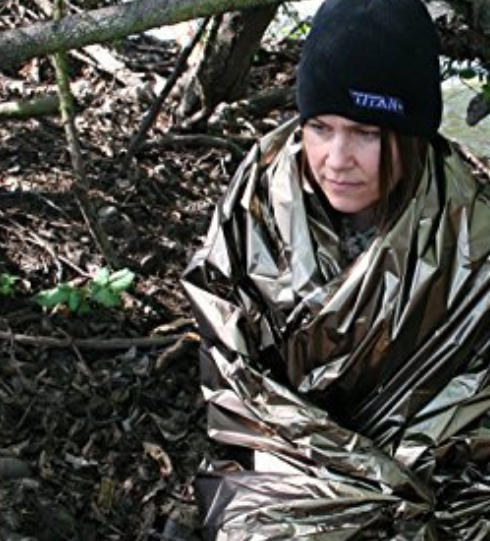
If you're
ever lost,
hug a tree
We gratefully acknowledge our supporters.
Without them…. We would be lost!


Annapolis County Ground
Search and Rescue Service Area
CONTACT US
Annapolis County Ground Search and Rescue, P.O. Box 234, Bridgetown N.S. B0S 1C0 info@ACGSAR.caFOLLOW US







